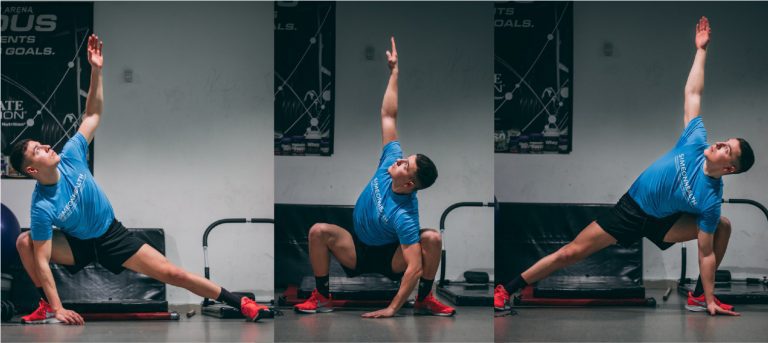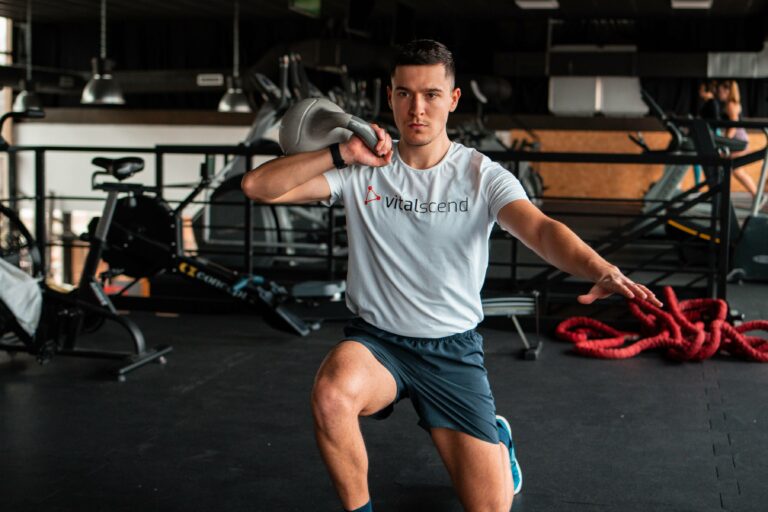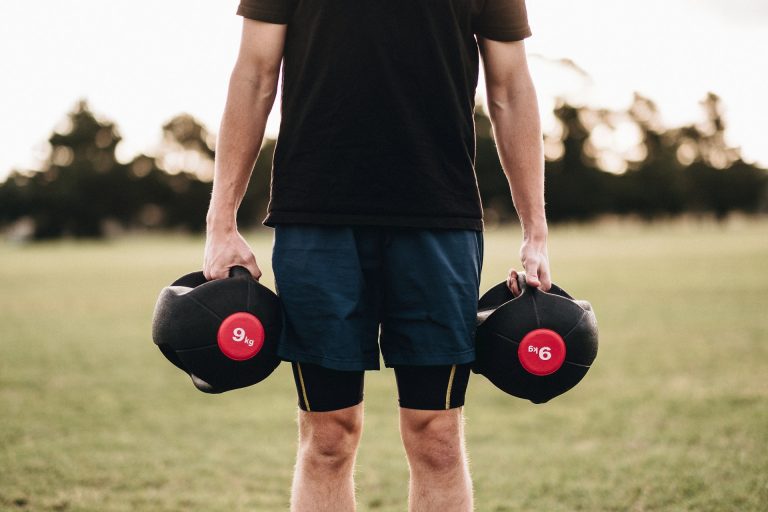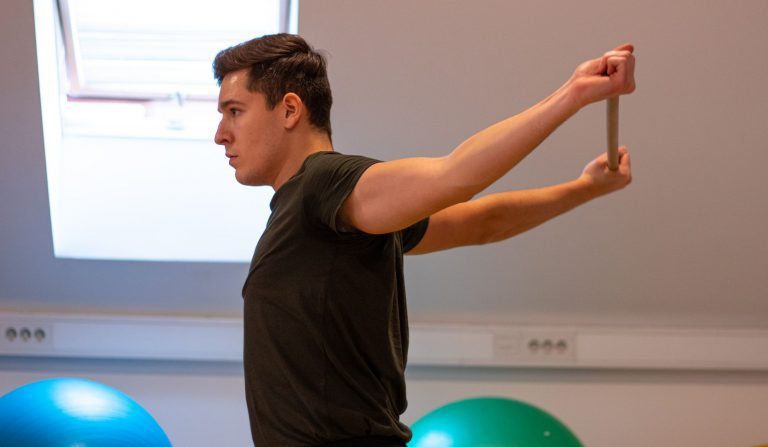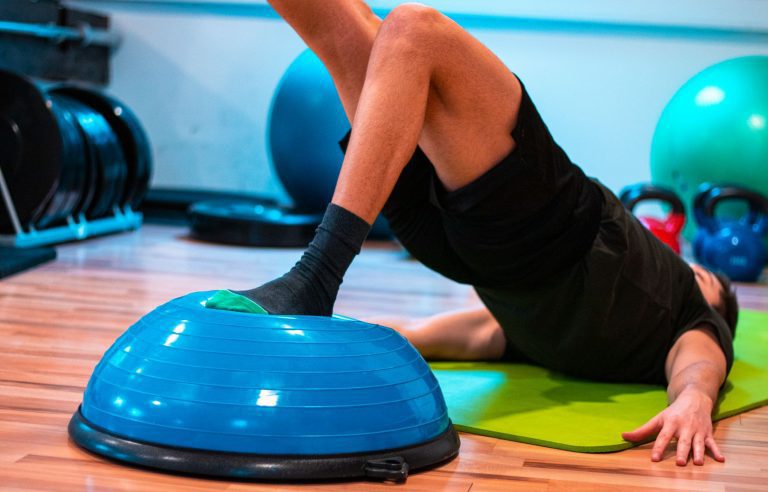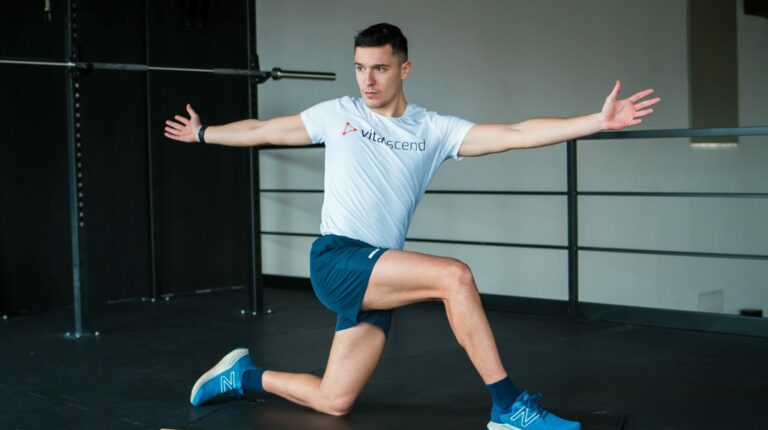Top 10 Hip Mobility Exercises – Unlock Tight Hips
Tight hips cause a myriad of problems like low back pain, hypomobility, and aches. This can interfere with your daily activities, and prevent you from squatting deep. We’ve compiled a great hip mobility exercise list to help you unlock your hips and free up movement.
Hip Tightness and Exercise (ROM)
Hips tighten due to immobilization. Sitting too much and not moving enough causes many muscles around the hips to shorten. (1) (2) (3) This doesn’t just result in low back pain and aches but also makes compound work in the gym a real pain.
A great combination of hip flexibility, hip strength, and hip mobility can set you on a path to a better squat form, more strength, less pain, and optimal posture. We need to move in higher ranges of motion for our hips to adapt and become more mobile. Mobility, get it?
Besides, mobility training is the main path toward a functional body.
What’s Mobility?
Mobility is the measure of the range of motion. Being mobile means moving in higher (optimal) ranges of motion. Joint mobility is the degree of articulation between the two bones in a given joint. We have many tissues around like ligaments (passive), tendons, and muscles (active) that dictate how far you can squat.
3 Core Components of Hip Mobility
Flexibility
Mobility
Strength
But many people confuse mobility with flexibility and ask, shouldn’t I just stretch more? That’s just one piece of the puzzle. Flexibility is the length, or the ability of a muscle to lengthen. Poor flexibility will lead to poor mobility.
You need to learn to activate and tense the muscles in lengthened position while controlling the movement in full ROM. That’s why today’s combination of exercises incorporates flexibility, mobility, and strength exercises for optimal hip mobility.
But other elements like muscle strength, active control in full ROM, and tension under elongation make mobility complete. In terms of hip mobility, you need to have hip muscles flexible enough to squat deep, but also strong enough to sustain the position.
Quick Anatomy and Biomechanics
The hip is a ball and socket joint, just like your shoulder. It has more degrees of freedom and planes of motion compared to your elbow for example, which can only flex and extend. It has many different ligaments and tendons which help passively or actively control the full movement of the hips.
It’s comprised of 17 muscles in total, that lie around the hip joints and it can move in three planes.
| Hip Muscles | Hip Movement |
| Hip abductors (on the outer side of the thigh) | Abduction or lateral flexion (extending out of the body) |
| Hip adductors (on the inner side of the thigh) | Adduction or medial flexion (moving the leg towards the center, midline of the body) |
| Hip flexors (front muscles, iliopsoas) | Hip flexion (flexion of the hip, front leg raise) |
| Hip extensors (rear muscles; glutes, hamstrings) | Hip extension (extension of the hip, rear leg raise) |
| Internal hip rotators (outer side) | Internal rotation (rotating the hip inward, knee in) |
| External hip rotators (inner side) | External rotation (rotating the hip externally, knee out) |
Athletic Performance & Benefits
Hip mobility is essential for optimal movement fluidity and correct movement patterns. Any lower body movement like squats, lunges, jumping, running, abduction, one-legged balance, or sumo deadlifts will rely on hip mobility.
Optimal mobility in the hips can also improve athletic performance in three ways. It can reduce the risk of injury, improve the quality of the movement and increase the output of strength or power.
Mobility is the range of motion we can effectively use. The deeper we can squat, the higher range of motion in the hips we’ve got. Also, many ballistic moves that require a transfer of elastic energy will benefit from higher ROM.
Disclaimer: For any specific hip pain or injury, impingement or sharp sensations always consult your physician, physiotherapist, or medical professional that specializes in sports medicine.
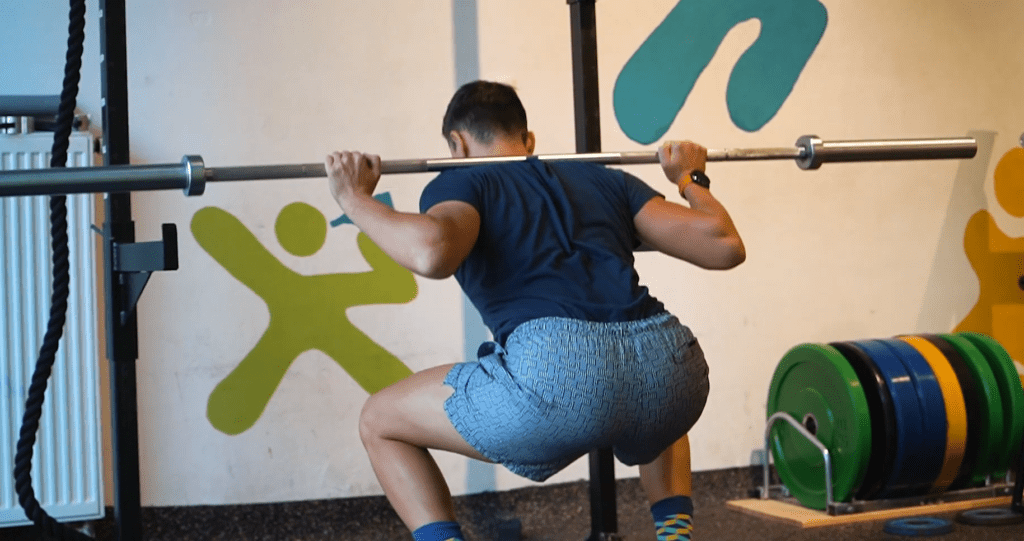
Top 10 Hip Mobility Exercises.
To improve hip mobility, we need to move more. A bit more specific than that, we need to progressively overload the hip in functional ranges of motion. This means two things
- We can’t do the optimal squat with tight hips right away. Forcing mobility or flexibility can cause injury. That’s why we need to progressively strengthen and mobilize the hips in functional ranges of motion. It’s a journey.
- Hypermobility is a bad thing. Aiming for excessive mobility is a recipe for disaster. We want to be flexible enough to get into a functional exercise (like the squat) but also strong enough to control it. We shouldn’t focus on stretching passive structures like ligaments, as that can lead to instability and injury of the hip joint.
These exercises are structured in three categories. We do flexibility first, as that acutely helps do the mobility work later on. Then we focus on higher functional ROM movements and control, and last but not least, strength. Yes, having stronger glutes, adductors, and abductors helps stabilize the hip joint.
Stretching – Flexibility
The main goal of stretching is to increase the flexibility of the muscles around the hips. We focus on stretching the glutes, quads, hamstrings, abductors, adductors, and hip flexor (iliopsoas) stretch, important for proper pelvis positioning.
Metrics: Each exercise is done for 3 sets, 30 sec. stretch, 30 sec. rest (if unilateral do both sides instead of resting). Deep breathing, relaxation, and emphasis on feeling the stretch.
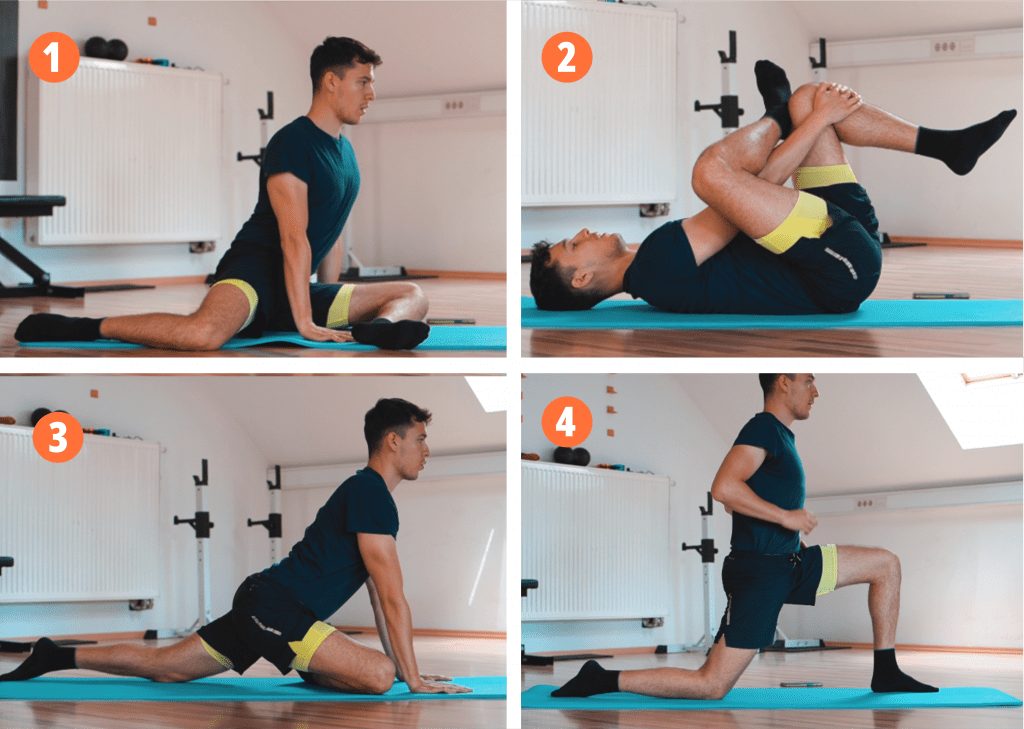
1. 90/90 Hip Stretch
To perform the 90/90 hip stretch you need to get seated, position one leg up front, and externally rotate that hip. The other leg is back, internally rotated in the hip. Both knees are on the floor, but on the front leg the knee is resting on the external side, and on the rear leg the knee is resting on the internal side. Keeping your back straight, you can hold the stretch, or even go deeper (by bending forward).
Alternatively, you can do 90/90 transfers, where you go from one position (R leg front, L leg rear) to the other side. You do this by simultaneously lifting the knees and rotating to the other side. If unable to keep your back straight, help support the weight with your arms back.
The 90/90 stretch is very versatile, stretching many hip muscles like the hip flexors, adductors, abductors, and even piriformis, and glutes. The front leg stretches outer muscles, the rear leg stretches inner muscles, remember.
2. Cross Ankle Stretch
Lie down on your back, cross the right ankle on your flexed left knee. You do this by flexing your hip and knee on your left leg, then position your right ankle on your left knee. (do so by externally rotating the L hip). Grip your right thigh and pull your leg closer. Feel the glute stretch and relax.
The cross-ankle stretch mainly targets hip extensors like the gluteus medius, gluteus maximus, and piriformis, which are tight from too much sitting.
3. Pigeon Stretch
Set yourself in an alternative lunge with your rear (left) leg’s knee resting on the floor. Support your weight on your arms, and shift the right foot to the left. Slowly (controlled) externally rotate the hip so the knee (front leg, R) rests down. At first, you support your body with extended arms, then as you progress, you can go lower on your forearms.
The pigeon stretch specializes in stretching the gluteus minimus muscle. It also stretches the iliopsoas on the side of the rear leg, and lower back, and groins,
4. Hip Flexor Stretch
Set yourself in an alternative lunge position with your rear leg’s (left) knee resting on the floor. Tilt your pelvis forward, straighten your back, lunge a bit deeper, support your right leg, and lift your opposite (left) arm up. Once you feel the stretch, breathe deeper and relax. As you progress, you can bend your left arm (and trunk) slightly to the right. Repeat on the other side. Remember, you’re lifting the arm on the side of the rear leg.
The hip flexor stretch is intentionally made to stretch our tight hip flexors, from too much sitting. These can rotate your pelvis backward, and increase lordosis which comes with back pain. For many people, besides core stabilization, and back activation, iliopsoas stretch is one of the best exercises to perform for posture.
Mobility – Higher ROM – Active Control
In the mobility section, we focus on moving through functional ranges of motion in the hip. The easier version allows for support, which takes that extra stabilization requirement off your body, so you mainly focus on flexibility.
Mobility work is about getting into functional positions like the squat, or lateral lunge and stretching your hip muscles. As you progress, you can do it without support, and add a little bit of weight down the line to ensure proper control.
Metrics: We do circular motions for 7-10 Reps, 3 sets, in a slow and controlled manner. For supported deep squats and lateral lunges, you perform 7-10 reps, 3 sets, and stay in the lower position for 2-3 seconds.
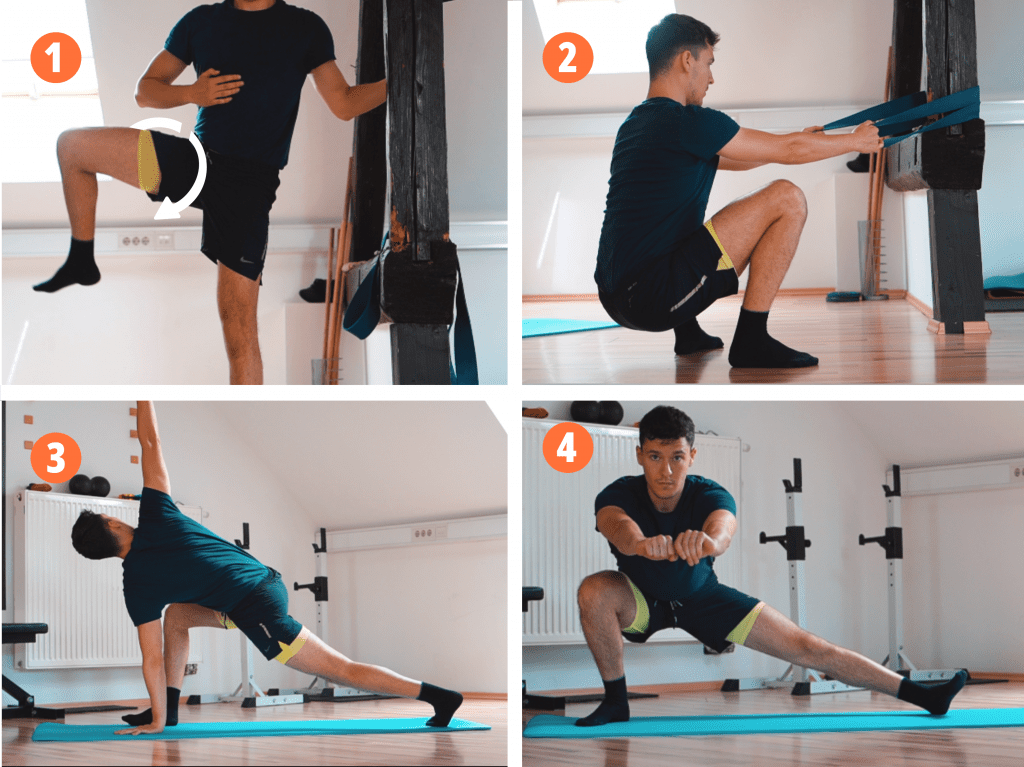
5. Supported Hip Circles
To perform supported hip circles, you need some sort of stable object like a wall. Stand next to the wall, support your weight, lift one leg, and find balance. Slowly, start performing hip circles on the leg that’s lifted. Do 7-10 slow and controlled reps in full ROM, both inwards and outwards, on each leg.
With this exercise, we aim to activate all the hip rotating muscles, control the full range of motion and increase bodily temperature. It’s a great hip opener for warm-up. We activate a larger amount of muscle mass since all muscles from piriformis, glutes, psoas, sartorius, adductors are doing the work.
6. Supported Deep Squat
The supported deep squat allows us to get deep into the squat, without needing to stabilize everything. It’s like an easier alternative to the squat, mainly focusing on improving flexibility and mobility of your ankles and hips.
To Perform, find a stable object you can grip. It can be a Swedish wall, TRX, rings, table leg, or a narrow part of any stable machine. Then slowly lower your weight to get into the squat position, and challenge your flexibility by going deeper. You can slowly progress this with elastic bands, which require slight activation from your side. You can also perform it with a partner, and progress up to a free, bodyweight deep squat.
The deep squat stretch will stretch the muscles that are tight around your hips, and prevent you from squatting deep. This depends on the individual, but many people feel a stretch in the inner portion of the thigh, the adductors. Also, it can stretch and activate your glutes and quads.
7. Lateral Lunge (Skandasana)
Position your feet wide apart and perform a lateral lunge on the right side. Go as low as you can, so your heel still stays on the floor, and your spine is upright. Stay in that position, feel the stretch in your inner thigh, and go deeper as you progress. Further along, you can add a backpack to improve stabilization (of course controlled, light).
Alternatively, you can do torso rotation while performing the lateral lunge. Position yourself in a deep lateral lunge on the right leg (left is extended) position your right hand on the floor and rotate your torso upwards by lifting your arm up towards the sky (ceiling).
The lateral lunge will mainly stretch the inner portion of your thigh, like the adductors (longus, magnus, brevis) on the extended leg. On the supportive leg, it will activate the glutes, quads, and many hip-stabilizing muscles. This improves unilateral stability, coactivation, and control in full ROM.
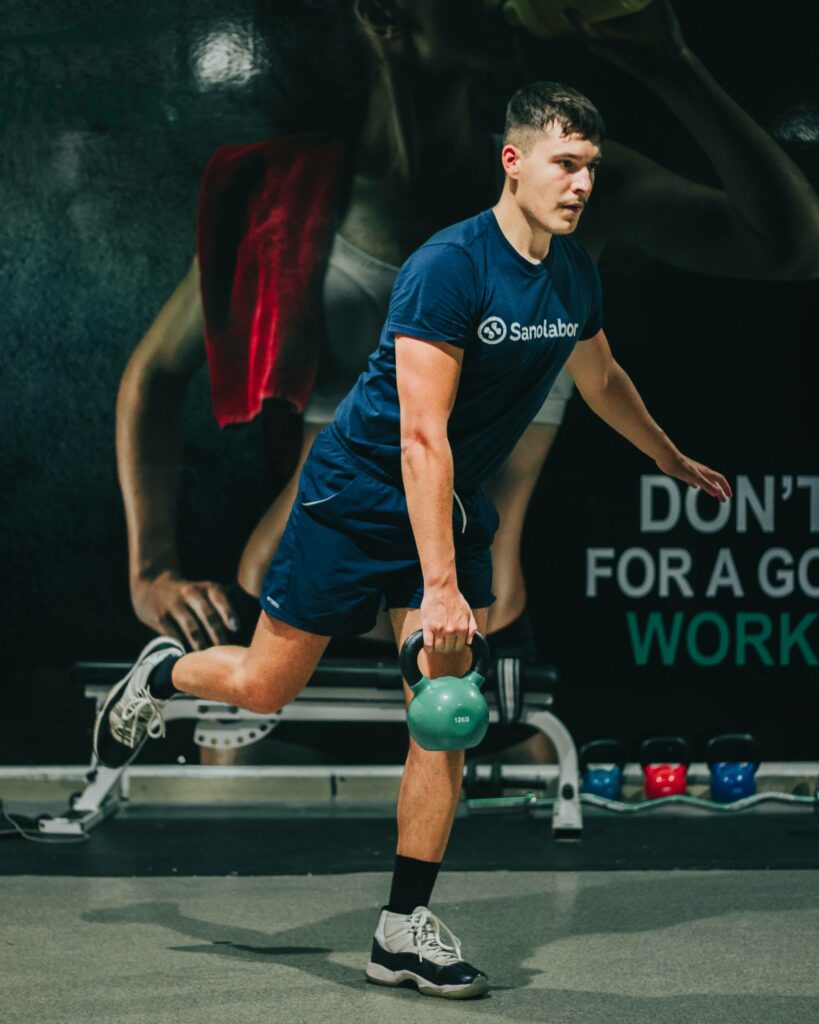
Strength – Control and Stabilization
The last piece of the puzzle is strength. Not in terms of maximal strength, but muscle quality, movement control, and coactivation. We need proper muscle strength and inter-muscular coordination to stabilize complex, compound movements.
Preferably, use exercises that are alternative to the main ones, like single-leg deadlift for better unilateral control for deadlift, or deep squat pause, to work on full ROM and control for the squats.
Metrics: Here, we mainly focus on muscle hypertrophy and coactivation – so we do 8-12 reps, 2-4 sets, 65% RM, and slower eccentric movements up to 2-3 seconds. Rest is around 90-120 seconds. It’s really about feeling the muscles, moving in higher ROMs, and controlling the movement.
8. Single-Leg Deadlift
The one-legged deadlift is a complex exercise for which you need stability and balance. If you’re a beginner, it’s better to position yourself next to a wall, to be able to support your weight which helps you keep your balance.
Pick up a kettlebell, stand on one leg (right) and slowly lower your upper body (90 degrees in the hip) to be parallel to the ground while extending your left leg back. Activate your glutes and hamstrings to lift yourself back, and repeat. Your spine should be straight all the time, knee on the supportive leg should be slightly flexed, to correct balance and not locked out.
The single-leg deadlifts strengthen your posterior chain muscles like the glutes, lower back, and hamstrings. As a unilateral exercise, it helps you coactivate a lot of muscles (core too) to stabilize the knee and keep balance in check.
9. Pause Squats
Pause squats are just like regular squats, but incorporate a pause in the lower phase. That’s to activate the muscles that are contributing to proper hip mobility.
Set your feet slightly wider than your hips – your toes look slightly outwards. Lower your body by squatting down, done by pushing your hips back and down, and flexing your knees. Push your knees in the direction of your toes, straighten your spine, and pause. Pause in a deep squat (heel must be on the ground) and lift back up. Lower your usual squat weight, since this one is way harder due to a longer time under tension and muscle elongation.
The pause squats are specifically designed as a way to progressively overload yourself during the squat, without increasing the load. Before you progress onto higher loads, you can always do pause squats, which increase time under tension and adapts the muscle to activate while elongated. That’s what mobility is all for.
10. Hip Thrust
To perform the hip thrust, set yourself lying back on a bench, feet on the ground. Set up the weight (or free) and push your hips up to the ceiling. Stop once you reach parallel with the ground, squeeze the glutes, and slowly lower down. Don’t exaggerate the lift, as ending up in lordosis increases stress on the spine.
At first, you can do with no weight, then one-legged then finally add a kettlebell or a barbell with weights as you progress.
The hip thrusts are a great exercise for building strength in the lower body, specifically targeting the glutes (as you extend up) and lower back muscles.
Conclusion
Mobility allows us to move freely in higher ranges of motion. This can reduce low back pain, aches, and hypomobility and increase athletes’ strength, power output, and functionality.
To improve hip mobility we need to focus on hip flexibility, hip mobility, and hip muscle strength. The point of mobility is to actively control the movement in functional (higher) ranges of motion, so activation of the muscle under elongation.
Best exercises include:
- For Flexibility – pigeon stretch, 90/90 hip stretch, cross ankle stretch, and iliopsoas stretch
- For Mobility – supported deep squat, supported hip circles, and lateral lunge
- For Strength – hip thrusts, pause squats, and single-leg deadlifts


